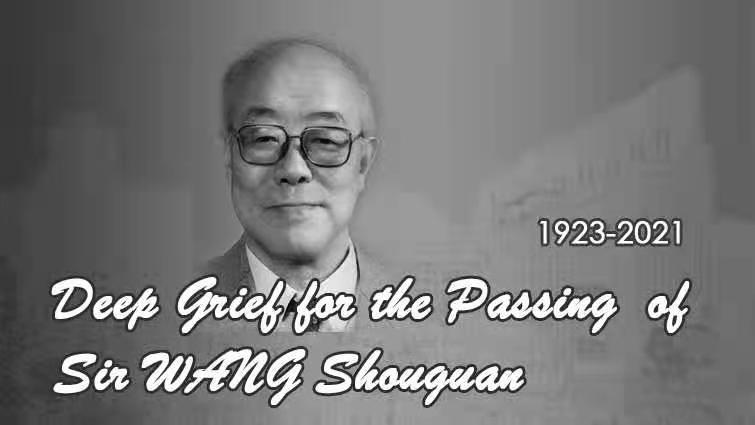Sir WANG ShouGuan's life

Sir WANG ShouGuan was born in Fuzhou, Fujian Province, on Januray 15, 1923. In 1943, he graduated from Mawei Naval School in Chongqing. In 1945, he went to England to study. In 1950, he was employed as an assistant astronomer at the Univeristy of London Observatory, and returing to China in 1953.
He has served in Purple Mountain Observatory, Shanghai Xujiahui Observatory, Beijing Observatory, National Astronomical Observatories, and University of Chinese Academy of Sciences. He has served successively as Director and Honorary Director of Beijing Observatory, President and Honorary President of Chinese Astronomical Society. He was elected to the representatives of the Fifth, Sixth, Seventh and Eighth National People's Congress. In 1980, he was elected member (academician) of the Chinese Academy of Sciences. He served successively as Deputy Director and Director of the Department of Mathematics and Physics of the Chinese Academy of Sciences, and the Deputy Chief of the Department of Astronomy of the State Science and Technology Commission. In 1998, he was elected academician of Eurasian Academy of Sciences.
Sir WANG ShouGuan has presided over the overall development of astronomy in China for a long time. He has been striving for the cause of astronomy for 70 years and has made great contributions to the development of modern astronomy in China.
He led the successful development of China's first radio astronomy telescope, meter-wave integrated aperture radio telescope system and other important observational equipments, and made a number of scientific achievements in sky survey observation. In order to break the bottleneck in the development of astronomy, he proposed the scientific idea of realizing the super-large-scale spectral sky survey, which has become the main means of sky survey and observation in the world today. The "Large Sky Area Multi-Object Fiber Spectroscopic Telescope (LAMOST)", a major scientific project of the Ninth Five-Year Plan, proposed by him and his scientific colleagues, has become a major innovation platform for optical astronomy in China. Sir WANG ShouGuan was also a member of International Astronomical Union (IAU), and served as organizing committee members of several commissions of IAU.
Sir WANG ShouGuan attaches great importance to talent training, science education and improving the scientific literacy of teenagers. He trained the first doctorates in astronomy of China, and served as Editor-in-chief for the Chinese Encyclopedia Astronomy Volume and a series of popular science works for the majority of young people. In his later years, with the support of more than 60 scientists, he founded "Beijing Youth Science and Technology Club", which is committed to young people's scientific research and practice activities, and has made an important contribution to the early discovery and training of scientific and technological talents.
Sir WANG ShouGuan lived a simple life and was indifferent life fame and wealth, which was respected by all around him. He was awarded the title of Advanced Scientific and Technological Worker at the National Science Conference in 1978. He was awarded the Second Prize of the National Science and Technology Progress Award in 1985, the Ho Liang Ho Li Foundation Science and Technology Progress Award in 1996, the National Advanced Science Popularizing Worker in the same year. He was awarded the honorary title of "Top Ten Science Communication Personage" in 2018. In 1993, the international number 3171 asteroid was named "wang shouguan star", published and recorded in history.
Sir WANG ShouGuan is forward-looking and pragmatic in science, and has the courage to explore and innovate. He has a broad mind, humility, discipline, and love for posterity. His scientific spirit and personal charm set a shining example for the scientific community, and he will always be worthy of our respect, learning and remembrance.
For Sir WANG ShouGuan's life story and important contribution to China's astronomy, please refer to Sir WANG ShouGuan's memory article at http://www.raa-journal.org/raa/index.php/raa/article/view/2789/2521